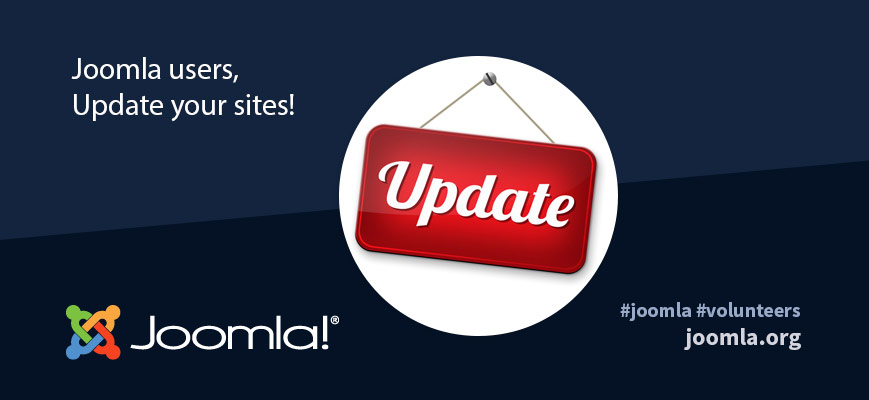
As of release 3.5 Joomla is collecting stats data, thanks to the stats plugin (only works if it’s enabled), and it found too many websites are not using the currently supported release of 3.9.2. This data is based on the Joomla, PHP, and database version. These are some pretty alarming statistics, and should not be ignored! We have provided some links at the bottom of this article for your reference, review, and to even get the latest release of Joomla.
Updating your website allows you to get the benefits from the latest features, along with the bug fixes. New features are implemented in minor and major releases and can help you with many aspects of your website, such as the look and feel of it. The latest bug fixes are one of the biggest reasons to update your website. We work on getting any bugs in the code corrected as soon as possible, and with each new release, there are new bugs that have been squashed.
The most important reason to have your website up-to-date is the vulnerability security fixes. This is something that is important for every website owner to stay up with. The more outdated your website is, the less secure it is, and the more likely it will get hacked. As you may already know, a hacked website can cause you to have your website destroyed, or even your data breached.
Firstly, we would like to point out some of the benefits of the current release. We released the Privacy Tool Suite with release 3.9 at the end of October in 2018, and have had so far two patch releases. The latest release with the Privacy Tool Suite is 3.9.2, and with the recent changes with GDPR - it’s every bit as important as it sounds. User consent to your Privacy Policy and/or Terms and Conditions is now a legal requirement in the EU, and with the Privacy Tool Suite, this is handled in an easy and straightforward way. You can even set it to have an expiration (for any changes you make), and your users can automatically consent again! The Privacy Tool Suite also lets you stay aware of any actions performed on your website, along with a few other key features. The newest release isn’t only about privacy though! Also included, are our new enriched frontend option, more flexibility for your custom fields, and faster article management.
Secondly, let’s talk about updating your extensions. Developers do everything they can to keep their extensions up-to-date, so you should be doing the same with your website! Updating the actual CMS is not the only step you need to take in this process. Generally, you can update your extensions from within the Joomla! Update system in the Admin Panel (backend) of your website, however, that is not always the case. It is important to keep an inventory of all the extensions you use and frequently check in with the developers to look out for new updates. This is just as important as updating the CMS, as outdated extensions may not work properly with an updated CMS.
Thirdly, you need to ensure that your PHP release is updated. Just as outdated extensions, outdated or incompatible releases of PHP may not work correctly and will stop your website from functioning properly. Not only this but, an outdated release of PHP is dangerous to the security of your website. Data gets better encrypted as your release gets updated, and let’s be honest, if attackers have access to your data, they have access to everything. Some other important aspects of keeping your PHP release up-to-date is ensuring that you have the option for support (releases only stay supported for so long). With this being said, newer releases also help keep your website as fast as possible!
Lastly, we would like to cover some things to remember to do when you are working on installing updates for your website. Most importantly, you should always take a backup first. It cannot be expressed enough how important this is. The last thing you want to happen is for your update to muck up your website and your host not have an available, recent backup to use. When you are performing updates, you should always do them one at a time as well. We would highly suggest you first update your extensions, one-by-one, and then your CMS. In between each update you should be testing your site as well. No, this does not just mean peering at the frontend either. Take a look a few random pages on the frontend and the backend.
That’s all there is to it!
Useful Links
- https://developer.joomla.org/about/stats.html - Stats from the Stats Plugin
- https://www.joomla.org/3/ The Privacy Tool Suite
- https://downloads.joomla.org/latest Latest Joomla release
- https://developer.joomla.org/security-centre.html Security Centre
- https://www.joomla.org/announcements/general-news/5749-the-work-of-the-joomla-security-team.html Work from Security Strike Team
- https://www.joomla.org/announcements/general-news/5719-4-reasons-why-you-should-get-php-7.html PHP release
- https://docs.joomla.org/Category:FAQ FAQ’s and how to solve them
- https://docs.joomla.org/Category:Joomla!_3.9 Tutorials on how to use the new features
- https://forum.joomla.org/ Forum for assistance
- https://issues.joomla.org/ Joomla Issue Tracker for reporting bugs
